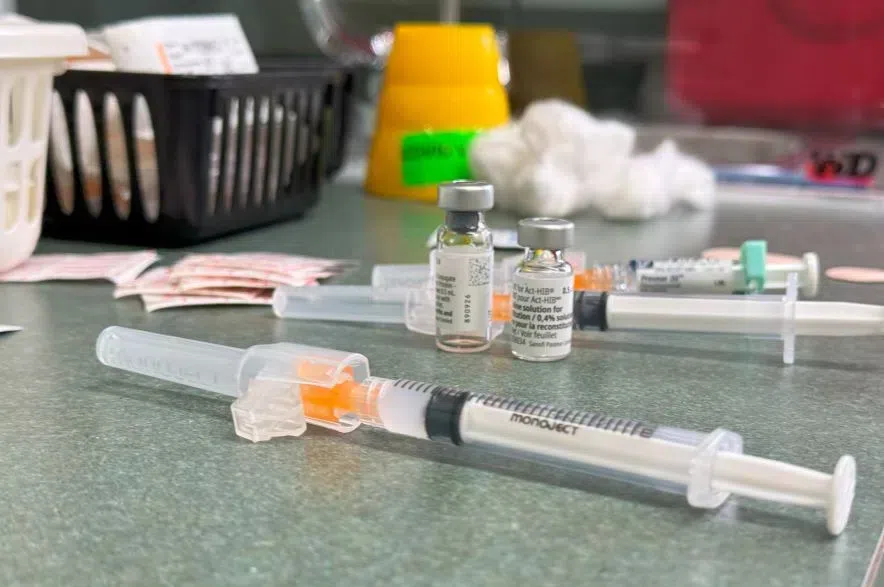On Thursday afternoon, the Saskatchewan Health Authority (SHA) said six measles cases had now been confirmed in the province.
The sixth one was in the southwest part of the province, and had just been confirmed that morning, but was unrelated to any of the other cases. It brought the total cases to three in the southwest, two in the southeast, and one in the northwest.
Read more:
Dr. David Torr, SHA medical health officer, said the person had just returned a week ago from international travel through Mexico and the U.S., and was unvaccinated. He said they developed symptoms after returning, was seen by medical professionals on Wednesday, and was confirmed to have measles the next day.
Torr said this case emphasizes again how important vaccination is for measles, which is incredibly contagious, can be a very serious illness and even deadly.
“We don’t have a concrete treatment for measles; we only try to provide supportive treatment when cases come up, but we have a very effective vaccination, so vaccination is the way to go,” explained Torr.
This may only be six cases, but Torr said they don’t want to see it get even to ten, pointing to Quebec and Ontario, which have hundreds of cases and are both growing quickly.
As cases grow, Torr said his real concern is those who aren’t vaccinated.
“Having experienced measles, seeing what’s happening in Ontario and Quebec and having seen in places abroad how fast and furious measles can build up – especially in the unimmunized population – and seeing how contagious measles is, seeing how serious is disease measles is, I, of course, have that concern,” said Torr.
Good herd immunity is set at 95 per cent of the population being vaccinated, according to Torr. He said measles had been eliminated in Canada in 1998 and cases after that were sporadic from out of the country, but now more people aren’t getting the vaccination, leading to a higher risk.
When asked what the immunity level is in Saskatchewan currently, Torr said it’s a tricky question.
“We have such a variation depending on which area or which little small area of geography you look at, that it varies anything from 40, 50, 60, 80 per cent,” he explained.
“But either way, we are still well below what we would consider safe for having herd immunity.”
In some places more people are coming forward to get the vaccine, in other places they aren’t, said Torr.
“It’s a bit early to say how fast and how well we shall get to our target of 95 per cent,” he said.
People who don’t know their vaccination status are encouraged to check MySaskHealthRecords, or to contact public health. And anyone who doesn’t have their vaccine is encouraged to get it.












